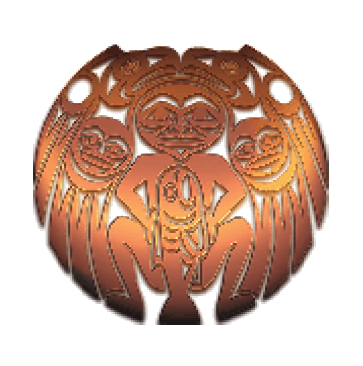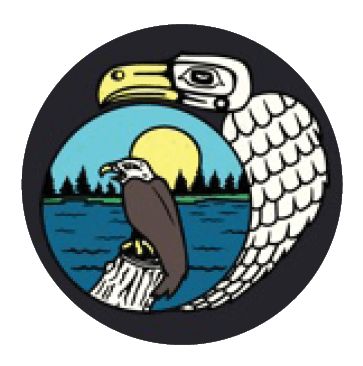Share Engagement Opportunities on Facebook
Share Engagement Opportunities on Linkedin
Email Engagement Opportunities link
Community Information Sessions were held at the Halalt Gymnasium on Monday, July 18 and the Crofton Community Centre on Wednesday, July 20. Thank you to all who attended and shared valuable information about your experiences and recommendations for flood management.
If you could not make it to the sessions, you can still learn about the process and provide your comments.
You can provide your comments in two ways:
- Use the Interactive Map to share your knowledge of and ideas about flooding in the Lower Chemainus Watershed.
- Share your comments and questions using the Online Comment Form.
Please share your feedback by August 2, 2022.
Share About the Study Area on Facebook
Share About the Study Area on Linkedin
Email About the Study Area link
The study area (shown in the yellow dashed line below) is the Lower Chemainus River floodplain. The floodplain’s headwaters originate in the CVRD, and the lower floodplain includes portions of the Municipality of North Cowichan, Halalt First Nation, Tsussie (Penelakut Tribe), and Say-la-quas and Squaw-hay-one (Stz'uminus First Nation). The study area begins about 1 km upstream of the Highway 1 Chemainus River bridge and extends to the Chemainus Estuary. It includes Bonsall Creek and Whitehouse Creek where they are next to the Chemainus River.
 click to open larger map
click to open larger map
Share Floodplain Maps on Facebook
Share Floodplain Maps on Linkedin
Email Floodplain Maps link
The outcome of Part 1 of the Flood Management Plan process is updated floodplain mapping. The maps demonstrate flood conditions under a major flood event on the Chemainus River combined with a significant coastal flooding event. Two types of maps have been created:
-
Flood Depth & Velocity Hazard Maps (1 large map or 5 maps)
These maps show a combination of flood depth (how deep waters get in different areas) and flood velocity (how fast the water is moving) during a major flood event. This information helps illustrate the impacts of the flood event, which can support community understanding and emergency preparedness.
-
Designated Floodplain Maps (5 maps)
These maps show the full extents of the floodplain along with Flood Construction Levels (FCLs). FCLs indicate the minimum elevation that new inhabited buildings should be built at within the floodplain (how high they need to be). This information is used in regulatory planning for land use and new development.
How to use the maps:
- Both types of maps provide important information about the floodplain. The Flood Hazard Maps are often of more interest to community members.
- Start with the Index Sheet of the maps you'd like to view for an overview of the floodplain and to read the notes that explain the maps.
- Based on the Index Sheet, select the map for the area you are most interested in viewing (Sheets 1 - 4) and open that map.
- Use the legend to interpret the flood event outputs in your area of interest. You can zoom in and pan around the map.
Share Technical Reports on Facebook
Share Technical Reports on Linkedin
Email Technical Reports link
The technical report and its appendices summarize the analyses and input used to create the floodplain maps. Watershed modelling is a technical exercise, and therefore these reports are technical in nature. Reports marked with an asterisk (*) may be of most interest to community members.
-
Chemainus River Flood Mapping Program, Part 1 - Floodplain Mapping Report* (22 pages)
An overview of the study, process used to create floodplain mapping, and recommended next steps.
-
Appendix A: Surveys and Water Level Measurements (11 pages)
Describes the survey data used to create the floodplain model.
-
Appendix B: Hydrology (15 pages)
Describes how water flows through the watershed and the scenarios used to develop flood mapping for the study area.
-
Appendix C: Chemainus River Geomorphic Atlas* (43 pages)
While we often think of rivers as unchanging, historical records show us that watercourses shift over time due to processes like flooding, sedimentation, blockages, and erosion. The geomorphic atlas summarizes landforms that affect how water flows through the Chemainus River floodplain. It includes hazard mapping that identifies where there is risk of physical changes to the river channel, providing important information for land use planning and hazard management.
-
Appendix D: Hydraulic Modelling (29 pages)
Describes how a hydraulic model that simulates flood events was created and the results of the modelling process. The hydraulic model can be used to predict potential future flooding impacts in the area.
-
Appendix E: Coastal Modelling (32 pages)
Because the Lower Chemainus River watershed meets the ocean at the Chemainus Estuary, the study includes coastal flood considerations as part of floodplain mapping. This report describes the process for integration of coastal considerations.
-
Appendix F: Flood Mapping Methodology (10 pages)
Describes the two mapping outputs created for the Lower Chemainus River.
The outcome of the technical work described above is updated flood mapping for the Lower Chemainus Watershed. Click here to view the maps.







